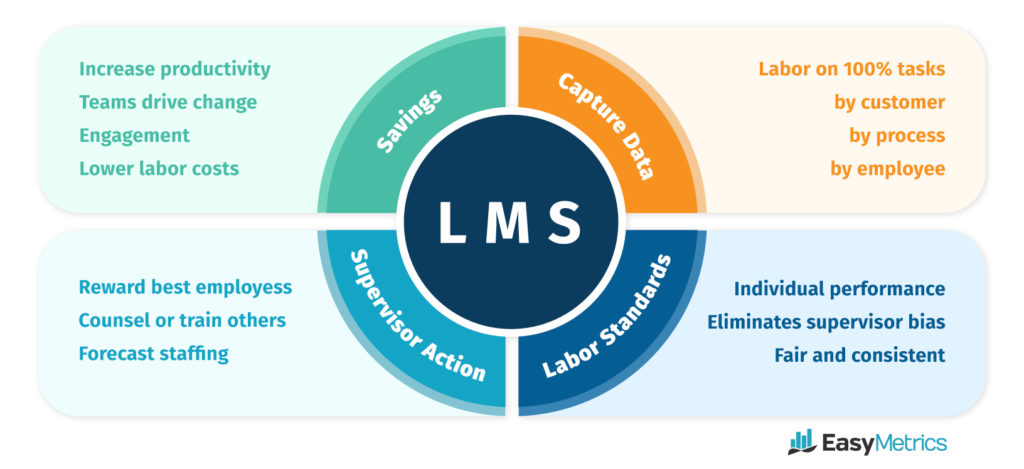
Do you want to optimize your workforce productivity and manage your labor effectively? Look no further than the Labor Management System (LMS). This powerful software takes employee activity data and provides insightful reports on productivity levels for both groups and individuals. With an LMS, you can gain visibility into where your workforce labor dollars are being spent and how to optimize your labor.
How Does an LMS Work?
An LMS captures and integrates data from multiple sources such as Warehouse Management Systems, time clocks, RF scan, MRP, ERP, CRM, and more. By analyzing this data, it reveals valuable insights that can transform your business operations. Here are some of the key benefits of using an LMS:
1. Identify Employee Performance
With an LMS, you can easily identify which employees deserve promotions or rewards and who might need additional training or counseling. This helps you create a more efficient and motivated workforce.
2. Streamline Processes
By analyzing data from your LMS, you can identify inefficient processes or tasks that employees may be struggling with. This allows you to make informed decisions on how to improve those areas and optimize your operations.
3. Optimize Staffing Levels
An LMS can forecast the staffing levels required for your work, ensuring you have the right amount of staff for each job. This helps you avoid unnecessary labor costs while maintaining productivity.
4. Understand Customer Profitability
By tracking labor costs associated with different customers, an LMS can help you identify which customers are making or losing you money. This insight allows you to optimize your customer relationships and focus on profitable business opportunities.
5. Analyze Indirect Costs
An LMS helps you understand the time and money spent on each indirect or non-value-add process. By identifying areas where resources are being wasted, you can make strategic decisions to streamline operations and reduce costs.
Cost and Implementation
While the true cost of most LMS providers may not be clear at first, Easy Metrics offers a transparent and cost-effective solution. Traditional enterprise LMS systems can cost between $250K – $1M per facility, including software licensing, consulting, and ongoing support fees. However, Easy Metrics LMS is different. It is a cloud-based solution with a streamlined implementation process, significantly reducing costs. In fact, our LMS delivers similar results at a fraction of the cost. Most facilities leveraging Easy Metrics need to save less than 1% of their total labor costs to breakeven and achieve a positive ROI within 5 to 8 months.
Implementation of the Easy Metrics LMS is quick and efficient, taking approximately one month. In some cases, customization may be required, which can extend the timeline, but value can be realized quickly in any scenario.
Pay For Performance
To boost productivity even further, Easy Metrics offers a Pay For Performance (PFP) program. This program goes beyond LMS tracking alone and typically doubles the productivity gains. Pay for performance rewards employees with bonuses as they increase their productivity. By understanding your cost accounting by process for labor, you can ensure that these bonuses come from measurable savings in the process. For example, if the labor cost per unit is $1 and productivity improvements reduce the cost to $0.80, the employee could receive a $0.05 per unit bonus.
As a general rule of thumb, expect productivity gains of 10-20% with LMS alone. When pay for performance is applied, the improvements can reach 25-50%.
Ready to optimize your workforce productivity and boost your bottom line? Get started with the Easy Metrics Labor Management System today and experience the power of data-driven decision making.
